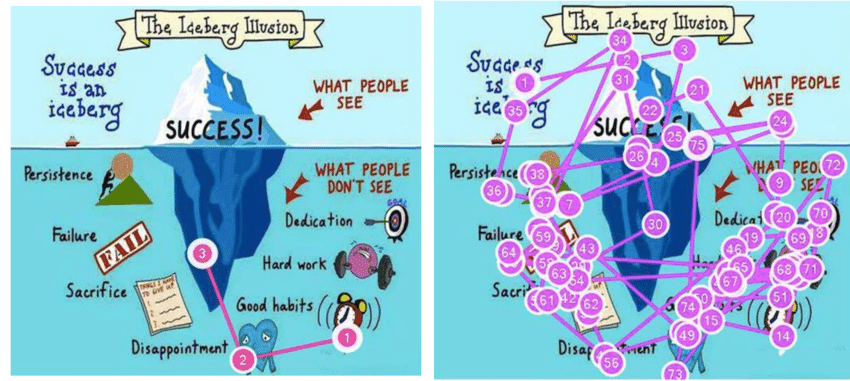Have you ever had a moment when everything just clicked? Maybe you figured out a problem without needing step-by-step instructions or learned a new skill by simply watching someone else. That’s the magic of intuitive learning. But what exactly does it mean, and why is it what is intuitive learning so important in today’s world? Let’s dive in to uncover the essence of intuitive learning and how it can shape our lives.
Understanding Intuitive Learning
At its core, intuitive learning is the ability to grasp new concepts, skills, or ideas without relying heavily on structured instructions. It’s a natural and instinctive process, where learning happens through observation, experience, and internal reasoning. Think about how children learn to walk. They don’t take formal lessons or read manuals. Instead, they observe, experiment, and adapt until they master the skill. That’s intuitive learning in action.
Unlike traditional methods that focus on memorization and repetition, what is intuitive learning intuitive learning taps into our innate curiosity and problem-solving abilities. It’s about trusting your instincts, making connections, and discovering solutions organically.

Why Is Intuitive Learning Important?
In a world that’s constantly evolving, intuitive learning equips us to adapt quickly. New technologies, changing job markets, and unforeseen challenges require more than rote knowledge. They demand creativity, adaptability, and critical thinking—all hallmarks of intuitive learners.
For instance, imagine starting a new job with tools or software you’ve never used before. An intuitive learner wouldn’t wait for a detailed tutorial. Instead, they would explore the interface, what is intuitive learning test features, and figure things out through trial and error. This ability to learn on the go is invaluable in today’s fast-paced environments.
The Role of Experience in Intuitive Learning
Experience plays a huge role in intuitive learning. The more you engage with diverse situations, the sharper your instincts become. Consider how seasoned chefs can create incredible dishes without measuring ingredients. Their intuition stems from years of tasting, experimenting, and perfecting their craft.
The same applies to other areas of life. Whether it’s navigating a new city, troubleshooting a technical issue, or understanding people’s emotions, experience builds the foundation for intuitive responses. Every challenge you face adds to your mental toolkit, making it easier to approach similar situations in the future.
How to Foster Intuitive Learning
You might wonder if it’s possible to cultivate intuitive learning. The answer is a resounding yes! Here are a few practical ways to enhance your intuitive learning abilities:
1. Stay Curious
Curiosity is the driving force behind intuitive learning. what is intuitive learning Ask questions, explore new interests, and challenge yourself to think beyond the obvious. The more curious you are, the more opportunities you create to learn intuitively.
2. Embrace Mistakes
Mistakes are not failures; they’re stepping stones to growth. what is intuitive learning When you approach challenges with an open mind, you’re more likely to learn from them intuitively. Experiment, take risks, and don’t be afraid to get things wrong.
3. Trust Your Gut
Your instincts are often more reliable than you think. When making decisions, listen to that inner voice. Over time, this practice strengthens your intuitive capabilities and builds confidence in your natural judgment.
4. Observe and Reflect
Observation is a powerful tool for intuitive learning. Pay attention to how others solve problems, approach tasks, or interact with their environment. Combine this what is intuitive learning with self-reflection to understand your own learning patterns and areas for improvement.
5. Engage in Hands-On Activities
Practical experiences are a goldmine for intuitive learning. Whether what is intuitive learning it’s trying a DIY project, playing a new sport, or tackling a creative challenge, hands-on activities encourage active problem-solving and spur intuitive growth.

Intuitive Learning vs. Traditional Learning
You might be wondering how intuitive learning compares to traditional learning methods. While both have their merits, intuitive learning stands out for its flexibility and real-world applicability. Traditional learning often involves structured lessons, rules, and guidelines. It’s effective for foundational knowledge, like learning a language or mastering math.
In contrast, intuitive learning thrives in unstructured environments. It’s about what is intuitive learning thinking outside the box and finding unique solutions. For example, an artist experimenting with new techniques or an entrepreneur brainstorming innovative business ideas often rely on intuition to guide their creativity.
Real-Life Examples of Intuitive Learning
To better understand intuitive learning, let’s explore a few real-life examples:
1. Learning Through Play
Children are natural intuitive learners. When they build towers with blocks or play pretend games, they’re learning problem-solving, coordination, and social skills without realizing it.what is intuitive learning Their curiosity and experimentation drive the learning process.
2. Picking Up New Technology
Ever handed a smartphone to someone unfamiliar with it and watched them figure it out? They’ll tap buttons, swipe screens, and explore options until they understand how it works. This trial-and-error method is a classic example of intuitive learning.
3. Mastering a Hobby
Think about someone learning to play an instrument. While formal lessons help, much of the progress comes from experimenting with chords, rhythms, and melodies. Intuition plays a huge role in discovering what sounds right.
Challenges of Intuitive Learning
Although intuitive learning has many benefits, it’s not without challenges. One of the biggest obstacles is what is intuitive learning overcoming self-doubt. Many people second-guess their instincts, fearing they’ll make mistakes. Another challenge is finding balance. While intuition is powerful, it’s important to combine it with knowledge and research for well-rounded learning.
Embracing Intuitive Learning in Daily Life
The good news is that intuitive learning isn’t reserved for a select few. It’s something we all possess and can nurture. By staying curious, embracing challenges, and trusting ourselves, we can unlock the potential of intuitive learning in every aspect of life. From personal growth to professional success, intuition helps us adapt, innovate, and thrive.
So, the next time you face a challenge, ask yourself: Can I figure this out intuitively? You might be surprised by how much you already know and how capable you truly are.
About The Author
You may also like
-
Target Credit Card Login for Men: A Complete Guide
-
Exploring the Macon Telegraph: A Pillar of Journalism in Georgia
-
Exploring alan tudyk left eye Left Eye: The Actor’s Unique Trait
-
Exploring the Delicious World of Geek Bar Flavors
-
Exploring the New Balance 9060: The Perfect Blend of Comfort and Style

